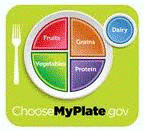Nutrition and Health Sciences, Department of

Department of Nutrition and Health Sciences: Dissertations, Theses, and Student Research
Date of this Version
5-2015
Document Type
Thesis
Citation
Wolf, T (2015). Transport of bovine milk exosomes by human colon carcinoma caco-2 cells and rat small intestinal cells (Master's thesis). University of Nebraska-Lincoln, Lincoln, NE.
Abstract
We have reported that microRNAs (miRNAs, miRs) in bovine milk regulate human genes. In milk, many miRNAs are encapsulated in exosomes, thereby conferring protection against degradation and a pathway for intestinal transport of miRNAs. We hypothesized that the uptake of bovine exosomes in human intestinal colon carcinoma Caco-2 cells and rat primary small intestinal IEC-6 cells is mediated by endocytosis. Transport studies were carried out using fluorophore-labeled exosomes purified from bovine milk. The transport of bovine exosomes exhibited saturation kinetics at 37°C (Km= 55.5±48.6 µg/200 µL, Vmax= 0.083±0.057 ng exosomal protein x 81,750 cells−1 x hr−1) and decreased by 60% if transport was measured at 4°C in Caco-2 cells, consistent with carrier-mediated transport. Inhibitors of vesicle trafficking and carbohydrate competitors caused a 62-85% and 61-83% decrease, respectively, in exosome transport, consistent with cellular transport of bovine exosomes by endocytosis that depends on surface glycoproteins in Caco-2 cells. Similar patterns were observed in IEC-6 cells. When milk exosomes at a concentration of five times the Km were added to the upper chamber in transwell plates, Caco-2 cells accumulated miR-29b in the lower chamber, whereas reverse transport was minor. We conclude that the uptake of bovine milk exosomes is mediated by endocytosis and depends on cell and exosome surface glycoproteins in human and rat intestinal cells.
Advisor: Janos Zempleni


Comments
A thesis Presented to the Faculty of The Graduate College at the University of Nebraska In Partial Fulfillment of Requirements For the Degree of Master of Science, Major: Nutrition and Health Sciences, Under the Supervision of Professor Janos Zempleni.Lincoln, Nebraska: May, 2015
Copyright 2015 Tovah Wolf